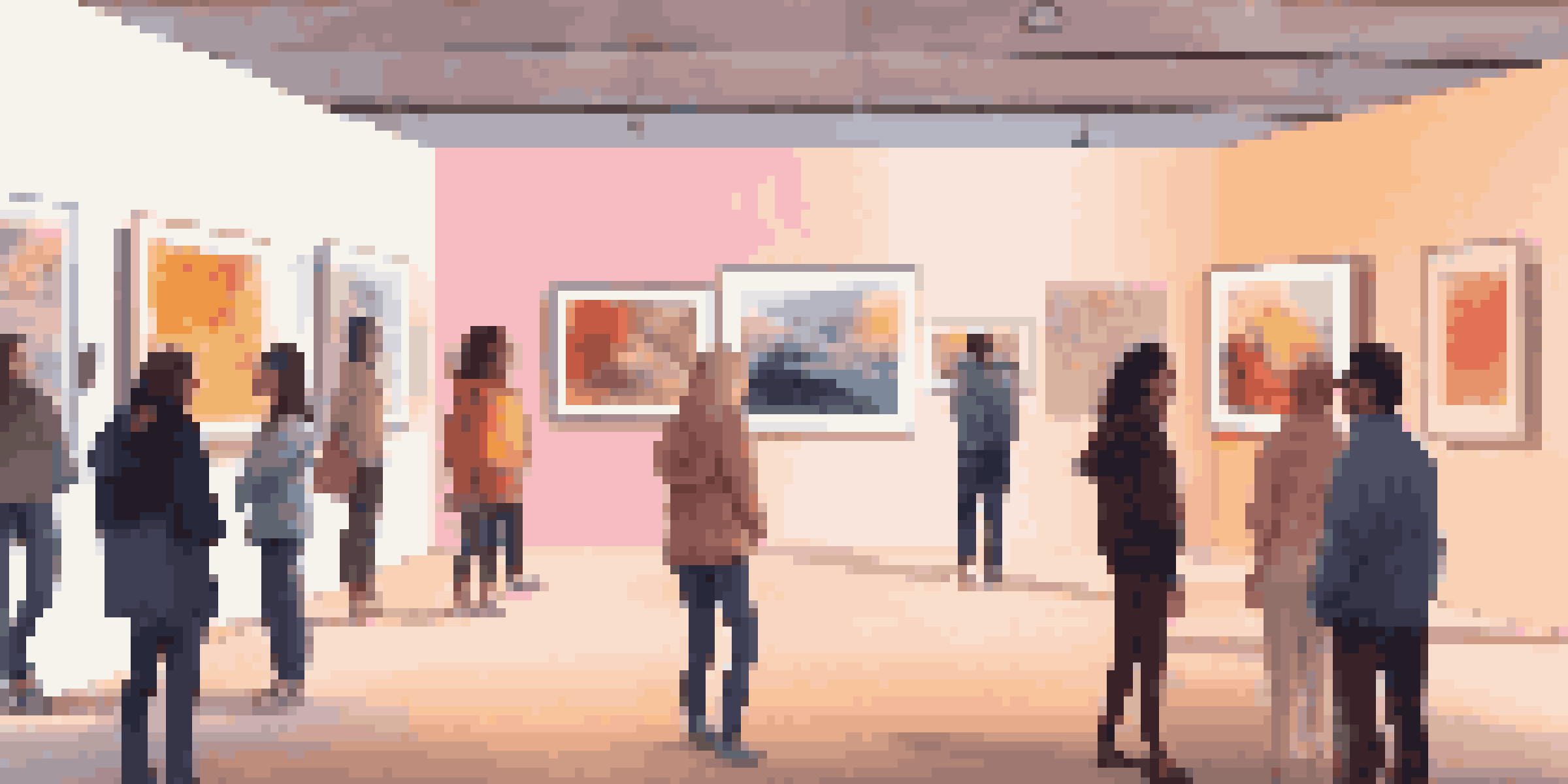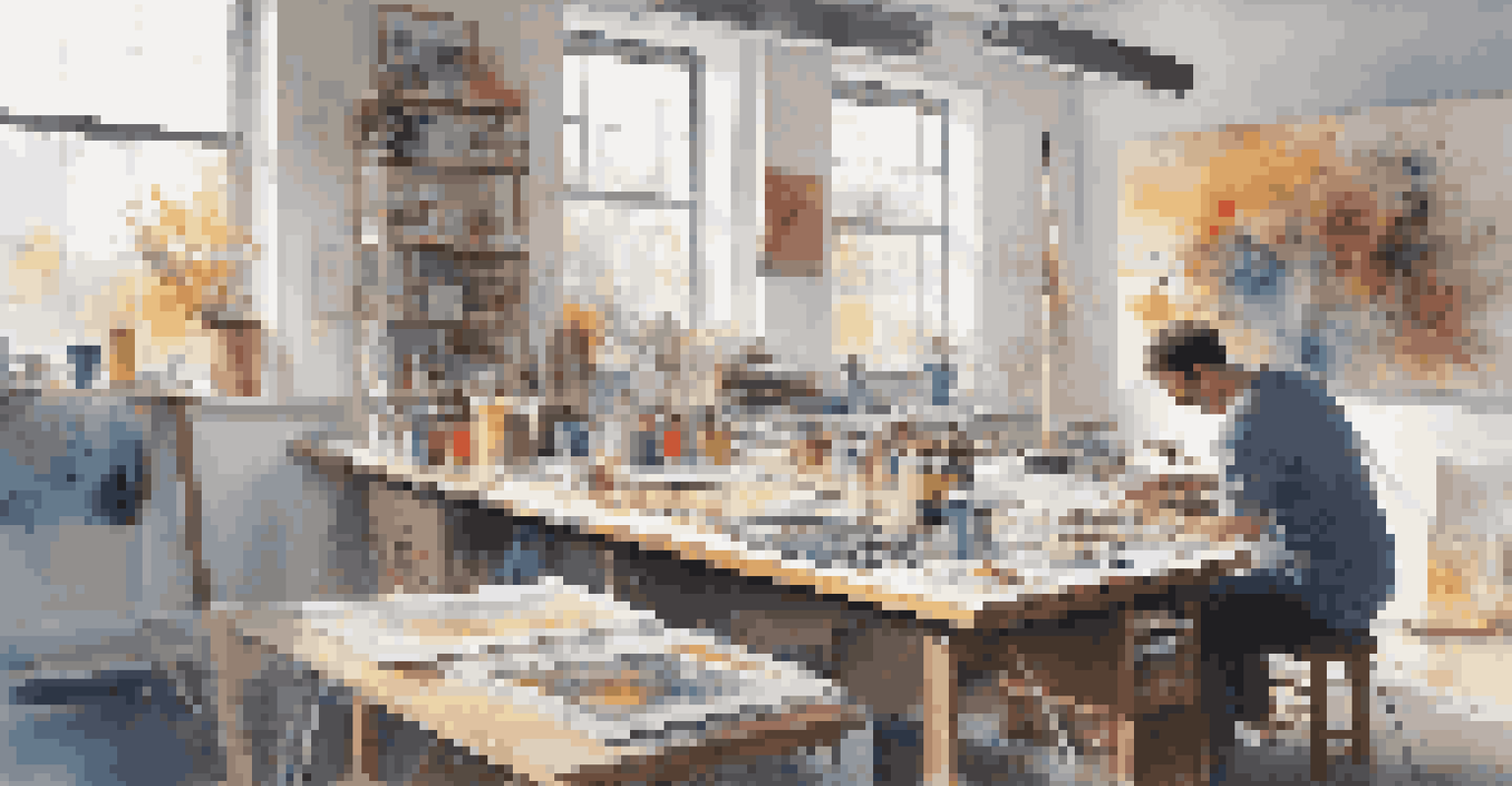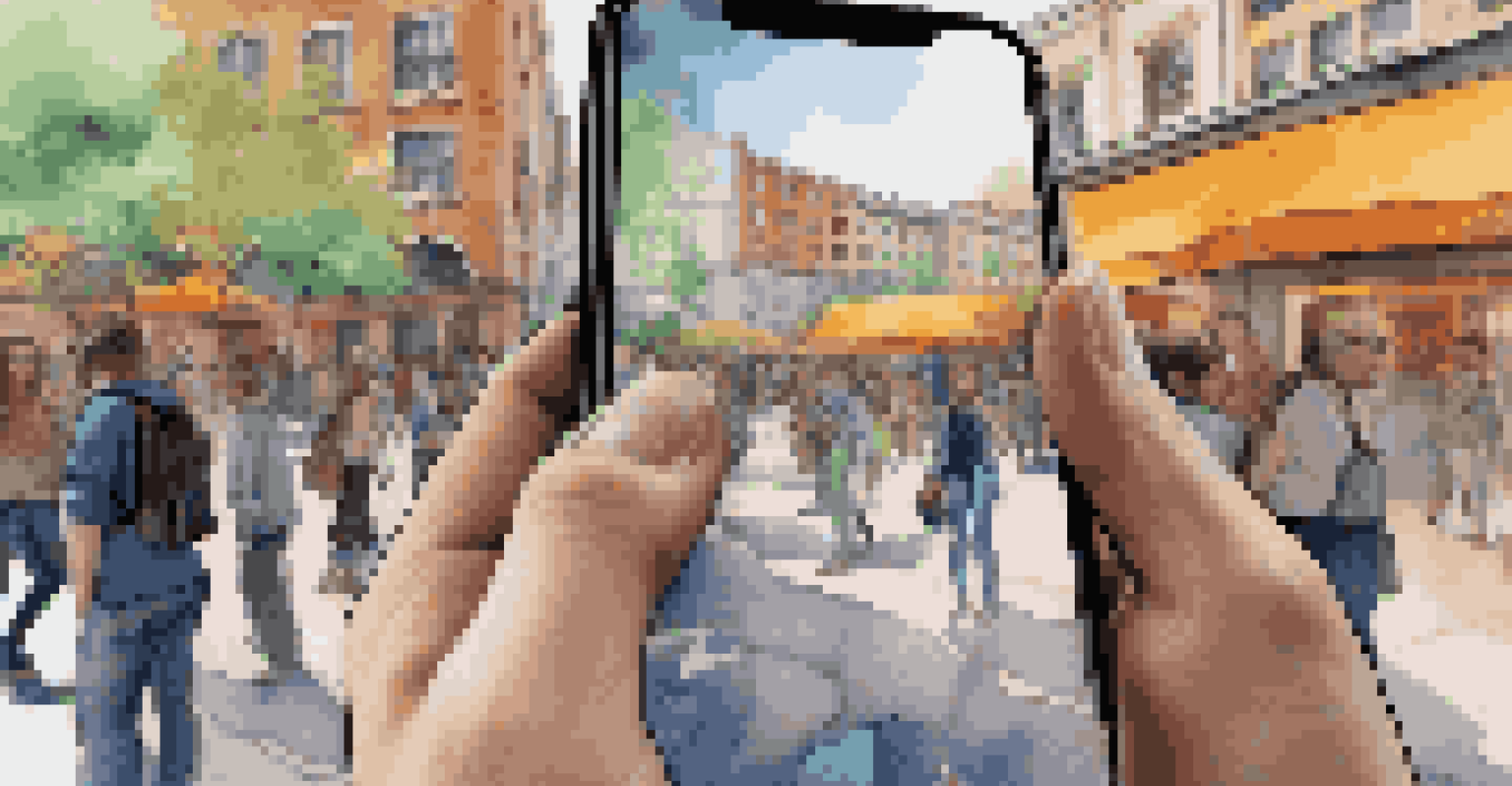The Evolution of Art Exhibitions in a Digital Era

The Shift from Physical to Virtual Art Exhibitions
In the past, art exhibitions were primarily physical events, drawing crowds to galleries and museums. However, the rise of the internet has revolutionized this landscape, allowing artists to showcase their work to a global audience without geographical limitations. Virtual exhibitions can now be accessed from the comfort of home, breaking barriers that once confined art appreciation to local communities.
Art is not what you see, but what you make others see.
For instance, renowned institutions like the Louvre and the Museum of Modern Art have embraced digital platforms, offering virtual tours that allow users to explore their collections online. These innovations not only enhance accessibility but also create opportunities for artists to reach audiences they might never have encountered in traditional settings. It's a new era where anyone, anywhere, can experience art.
Yet, this shift also raises questions about the essence of experiencing art. Can a digital image truly replicate the emotional impact of standing before a masterpiece? While the experience may differ, the digital realm offers unique benefits, such as interactive features and multimedia presentations that can enrich the viewer's understanding of the artwork.
The Role of Social Media in Art Exhibitions
Social media platforms like Instagram and TikTok have become crucial tools for artists and galleries to promote exhibitions. These platforms not only serve as marketing channels but also as creative spaces where art can be shared, discussed, and celebrated. Artists can engage directly with their audience, fostering a sense of community that wasn’t as prevalent in traditional exhibition formats.

Consider how hashtags can connect art lovers to trending exhibitions or how livestreams can give an insider’s view of gallery openings. These digital interactions create buzz and encourage more people to participate in art events, whether online or in-person. Social media has essentially transformed the way we discover and engage with art.
Virtual Exhibitions Expand Access
The rise of digital platforms allows artists to reach global audiences, breaking geographical barriers to art appreciation.
However, this shift also means that the art world is more competitive than ever. Artists and galleries must continually innovate their online presence to capture attention in an oversaturated digital marketplace. The challenge lies in not just showcasing artwork but also creating compelling narratives that resonate with audiences.
Technological Innovations Enhancing Art Experiences
Emerging technologies such as augmented reality (AR) and virtual reality (VR) are taking art exhibitions to new heights. With AR, viewers can interact with artworks in real-time, bringing static pieces to life through their smartphones. This interactive element adds a layer of engagement, allowing audiences to experience art in a more immersive way.
The future belongs to those who believe in the beauty of their dreams.
For example, the recent AR installations at various art fairs enabled visitors to see additional layers of information about the artwork simply by pointing their devices at it. Such innovations not only deepen understanding but also make art more accessible to tech-savvy audiences. This fusion of art and technology is creating a fresh dialogue about how we perceive artistic expression.
Furthermore, VR exhibitions offer an entirely different perspective by allowing viewers to step into a virtual gallery space. This can be particularly beneficial for those unable to travel to physical exhibitions, ensuring that the appreciation of art transcends physical limitations. It's an exciting time for the art world as these technologies continue to evolve.
The Importance of Online Curation
As digital platforms proliferate, the role of online curation has never been more essential. Curators are now tasked with selecting and presenting works in a way that resonates with digital audiences while maintaining the integrity of the art. This involves not just showcasing pieces but also creating a narrative that connects them, providing context and meaning.
Many galleries have started employing data analytics to understand viewer preferences and behaviors, allowing them to tailor exhibitions accordingly. By analyzing which pieces attract the most attention, curators can create more engaging experiences that reflect contemporary tastes and trends. This data-driven approach to curation is a game-changer in understanding audience engagement.
Social Media Transforms Art Engagement
Platforms like Instagram and TikTok enable direct interaction between artists and audiences, fostering a vibrant art community.
Moreover, online curation opens the door for diverse voices and underrepresented artists to gain visibility. By curating exhibitions that highlight varied perspectives, the digital space becomes a platform for inclusivity and broader representation, enriching the art dialogue. The evolving role of the curator in this digital age is a fascinating aspect of the art world today.
Global Reach of Digital Art Exhibitions
One of the most significant advantages of digital art exhibitions is their ability to reach a global audience. No longer confined by physical space, artists can share their work with people from all corners of the world. This democratization of art allows for a more diverse range of voices and styles to emerge, enriching the global art conversation.
For instance, during the pandemic, many artists and galleries turned to online platforms to host exhibitions, attracting viewers who might not have been able to attend in-person events. This shift not only expanded their audience but also fostered a sense of solidarity among artists and art lovers worldwide. The power of the internet has made it possible for art to transcend cultural and geographical boundaries.
However, with this global reach comes the responsibility to represent and respect cultural nuances. Artists and curators must navigate these complexities while ensuring that their work resonates with diverse audiences. The challenge lies in finding a balance between universal themes and localized expressions, ensuring that art remains relevant and impactful across different cultures.
Challenges of Digital Art Exhibitions
Despite the numerous benefits, digital art exhibitions are not without their challenges. One major concern is the potential loss of authenticity and emotional connection that comes with experiencing art online. While digital platforms offer convenience and accessibility, they may also dilute the richness of direct engagement with the artwork.
Additionally, the technical aspects of hosting online exhibitions can be daunting for many artists and galleries. From ensuring high-quality images to navigating complex software, the learning curve can be steep. This can lead to a disparity in how well different exhibitions are presented, impacting viewer experience.
Hybrid Models Shape Future Exhibitions
The future of art displays will likely blend physical and digital experiences, enhancing viewer engagement and accessibility.
Another challenge is the issue of copyright and intellectual property in the digital space. With the ease of sharing and reproducing art online, artists must be vigilant about protecting their work. As the digital landscape continues to evolve, finding solutions to these challenges will be critical for the sustainability of digital art exhibitions.
The Future of Art Exhibitions in a Digital World
Looking ahead, the future of art exhibitions appears to be a blend of digital and physical experiences. Many experts believe that hybrid models will become the norm, allowing audiences to choose how they engage with art. This could mean attending in-person exhibitions while also having the option to explore virtual components.
As technology continues to advance, we can expect even more innovative approaches to art presentation. From AI-generated artworks to fully immersive environments, the possibilities are limitless. This ongoing evolution presents exciting opportunities for artists and curators to push boundaries and redefine what an exhibition can be.

Ultimately, the key will be maintaining the human connection that art fosters, whether in-person or online. As we navigate this digital era, the challenge lies in leveraging technology to enhance, rather than replace, the fundamental experiences that art provides. The future of art exhibitions is bright, and it's up to us to shape it.